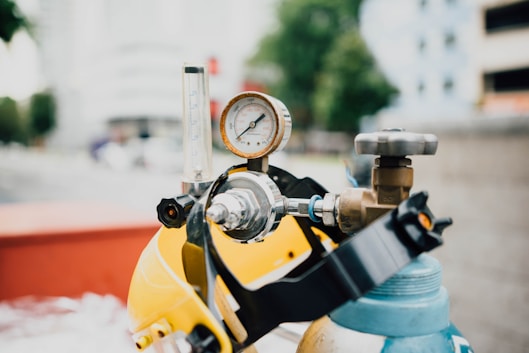GAS PRESSURE
Particle Collisions: Gas pressure arises from the collisions of gas particles with the walls of their container. Imagine a bicycle tire: when the air particles inside the tire collide with its walls, they exert a force on those walls. This force per unit area is what we call pressure.
Factors Influencing Gas Pressure:
Particle Speed: When gas particles move faster (due to increased temperature), they collide with the container walls more frequently, leading to higher pressure.
Adding More Particles: By adding more gas particles to the same container, you increase the overall force they exert on the walls.....
But there are other factors too.... over to you to investigate in the next section!........


Investigating Gas Pressure!
Sometimes science can seem to be just lots of facts being presented to you for no apparent reason. However, the whole point of science is to put forward theories and the investigate them to see if they can be proven to be true.
It's time to think and act like a scientist!
We want you to use the simulation below to find out some things about gas pressure and how different variables affect it. Investigate what? Find out below:
Investigate the following:
How is the pressure of a gas affected by temperature?
Make a prediction.
What is your independent variable?
What is your dependent variable?
Are there any control variables?
Use the Phet simulation above to investigate and collect your data. (use the "ideal" part of the simulation).
HINTS: You can adjust the temperature and measure the pressure in the simulation. Make sure that the temperature is in degrees Celsius. Leave the pressure in "atm" (atmospheres for its units). Make sure you select a range of temperatures that will give you a good range of pressures.
Design a table to collect some data.
Plot a line graph.
Write a conclusion. Can you explain what you have found out in terms of the gas particles? Use this link to a video on "BBC Bitesize" to help if you are stuck for ideas.
CHALLENGE TASKS:
Repeat the steps above to investigate how the volume of a container affects the pressure of a fixed amount of gas at constant temperature. Plot another graph and write conclusions.
It was experiments with gas pressure that lead to the concept of "absolute zero". What is absolute zero and how did it scientists use experiments with gases to find its value?




